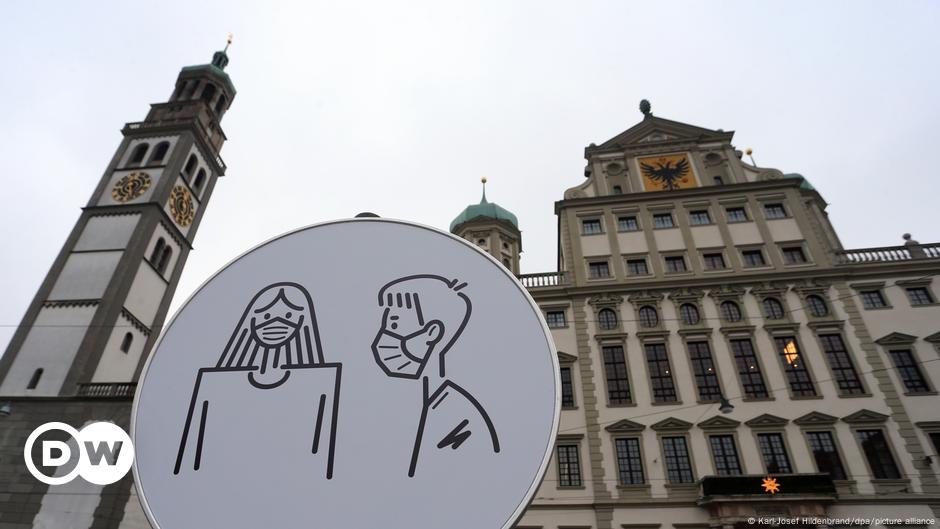Germany
In Germany, a so-called lockdown has been in effect since mid-December: schools and daycare centers are largely closed, as are shops and restaurants. Private meetings are only allowed in your own household and with a maximum of one other person. In places with a particularly high incidence (more than 200 new infections per 100,000 inhabitants within a week), the range of motion is limited to 15 kilometers around the place of residence. In some federal states there are also night exit restrictions.
When entering from foreign risk areas, there is a ten-day quarantine and test obligation. The federal government has also imposed even stricter entry rules for more than 20 countries with particularly high numbers of infections. Since the beginning of the pandemic, more than 2.1 million people in Germany have been infected with the coronavirus, and more than 51,000 have died in connection with the coronavirus. The number of new infections every day has recently decreased slightly.
France
Twice there have been strict exit restrictions in France for weeks. Looking at the virus mutation that is spreading in the UK, many experts are calling for a third lockdown. Shops and schools are largely open in France, restaurants are closed. Nationwide there is now a nightly curfew from 6 p.m. to 6 a.m. Supermarkets then close and walking and outdoor sports are prohibited. In addition to travelers from non-EU countries, travelers from European countries now also have to prove a negative PCR test, which must not be older than 72 hours. So far, more than 71,000 people have died in connection with the coronavirus in France. The number of infections had risen again since the beginning of the year, and is currently more than 20,000 new infections daily.
Great Britain
Shortly before Christmas, Prime Minister Boris Johnson reported a newly discovered coronavirus mutation that could be significantly more contagious. According to experts, variant B.1.1.7 is between 30 and 70 percent easier to transfer. Johnson caused a stir with the statement that the variant could also be more deadly. Experts criticized the prime minister for making this statement and said it was too early to make such a statement. The number of new infections every day and the number of reported deaths related to the virus remain high. The third lockdown will apply to the whole of Great Britain until February 22nd. In England the house cannot be left without good reason. Schools, universities and all non-essential businesses are closed.
Netherlands
There has been a lockdown in the Netherlands since mid-December. Schools, shops and restaurants are too. Private contacts are limited to one person outside of your own household. Since January 23, there has also been a night curfew from 9 p.m. to 4.30 a.m. for the first time. This is initially valid until February 9th.
Austria
Actually, the Austrian government wanted to relax the corona measures from January 25th. But experts had warned against the virus mutation from Great Britain, which was already widespread in Austria. The lockdown was therefore extended until February 7th. After that, it is hoped, trade will reopen under strict security precautions. Chancellor Sebastian Kurz named an incidence of 50 new infections per 100,000 inhabitants as a guideline for future action. It was recently around 120.
Portugal
With more than 14,000 new infections, Portugal had reached a new high a few days ago. Daycare centers, schools and universities are initially closed for two weeks, the government has imposed a new nationwide lockdown with even stricter exit restrictions. It has been in effect for one month since January 20 and is intended to ensure that the British virus variant does not spread any further. The house may only be left for good reason. Home office is mandatory wherever possible. Restaurants and shops – except for groceries and basic daily needs – must remain closed.
Sweden
In Sweden the 7-day incidence is over 200, and the numbers have risen sharply again after low values in summer. Sweden continues to follow its special path in the corona pandemic. Instead of strict corona measures, only moderate restrictions on public life apply. Wearing mouth and nose protection is also still not an obligation, just a recommendation. The special route has resulted in comparatively high numbers of infections and deaths. Since the beginning of the pandemic, there have been almost 540,000 corona infections and around 10,800 deaths related to such infections in Sweden. Calculated down to the population of the country with a population of ten million, these were significantly higher corona numbers than in Germany or the rest of Scandinavia.
Spain
Spain is particularly hard hit by the corona pandemic within Europe. On January 18, the number of new infections peaked at more than 84,000. The number of new infections every day is still high, at more than 40,000. The state of alert applies throughout the country until May 9, which enables the autonomous communities (regions) to impose night curfews and restrictions on movement and to limit gatherings depending on the infection situation. This means that different rules apply across the country. Restaurants are usually only allowed to sell outside the home or only serve outside. Many fitness clubs are closed, theaters, concert halls and cinemas are only allowed to occupy a fraction of their seats, if at all. Individual corona hotspots are completely sealed off.
Czech Republic
Because the number of infections remains high, the government has extended the state of emergency until mid-February. Restaurants and hotels as well as most shops are closed. There is a nightly curfew from 9 p.m. to 5 a.m. It is forbidden to drink alcohol in public, cultural and leisure facilities are closed.
– .


